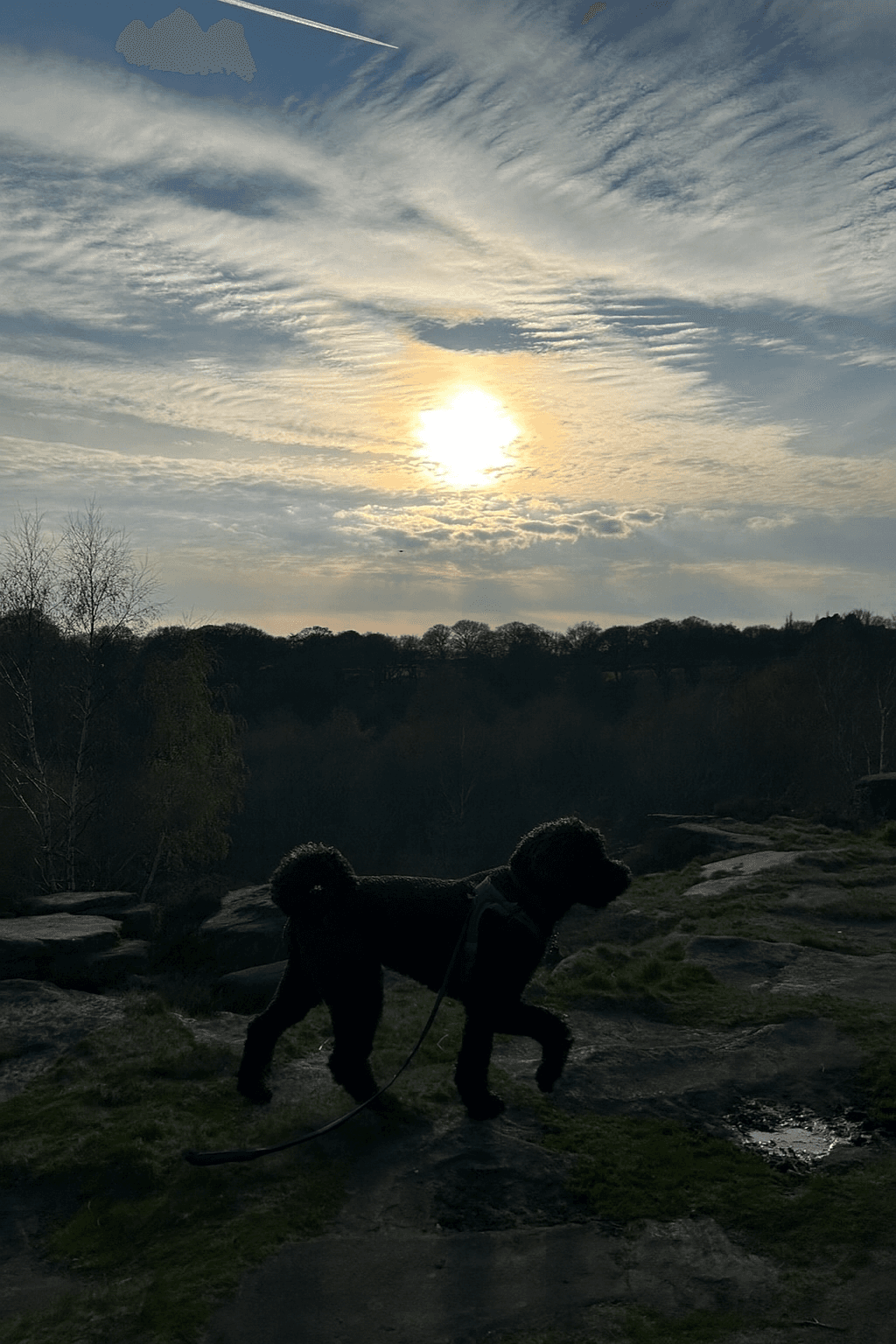
Puppy Socialisation in Saltaire: where to walk, when to go, what to bring
Make the world feel friendly and predictable with short, positive outings around Saltaire. Here’s a practical local plan.
Make the world feel safe and predictable. Choose wide pavements, short sessions, and one new experience at a time.
Where to go first
Pick wide, quiet places with easy exits. Avoid bottlenecks until your puppy is more confident.
- Quiet streets: Victoria Road (early), and side streets by the mill.
- Park edges: Perimeter paths of Roberts Park; pause on benches for “look and treat.”
- Towpath with care: Only the widest stretches. Step off early for bikes and runners.
For wet weeks, see our rainy-day guide.
When to go (timing matters)
- Best windows: Early mornings (6:30–8:30) and weekday mid-mornings.
- Avoid: School run peaks, towpath pinch points, hot afternoons.
- Session length: 5–10 minutes on lead at first; finish while they feel fresh.
What to bring (small + simple)
- Lead & harness: Y-front harness; 1.8–2 m fixed lead; optional 3–5 m long line.
- Treats: Two values—“normal” and “wow” for bigger moments; one-handed pouch.
- Weather: Micro towel, light drying coat, water + foldable bowl.
- For you: Waste bags, warm layer, phone on silent—eyes on the puppy.
The “one new thing” exposure plan
Aim for one new thing per walk, not a bingo card. Pair with food, end early, celebrate.
- Sounds: Distant train (outside Saltaire station), bus brakes at 20–30 m, a bike bell heard once then treated.
- Surfaces: Dry cobbles by the mill, wet grass for a short pass, timber footbridge with slow steps.
- Sights: Pram at 10–15 m, jogger passing with a step-off, a calm dog across the path.
Green-light rule: your puppy takes food, sniffs, and disengages to you in 2–3 seconds. If not, add distance or change direction.
A gentle two-week scaffold
Keep volume low and quality high. Change one variable at a time.
- Mon: First easy lap — side streets → park perimeter; new thing: bike bell at distance
- Tue: Surface change — short pavement-only; new thing: 30–60s on cobbles
- Wed: People watching — park edge bench; new thing: pram at 10–15 m
- Thu: Sound — station fringe (carry if needed); new thing: quiet train arrival
- Fri: Flow — short towpath wide bit; new thing: jogger passes—step aside
- Sat: Rest / in-arms — quick look near park then home
- Sun: Repeat best day — celebrate a micro-win
Red flags (pause & adjust)
- Too much, too fast: refusing food, flattening, freezing, or lunging — add space and shorten.
- Over-tired aftermath: wired zoomies then crash naps every time — halve duration and add a sniffy rest stop.
If you’re unsure, ask your vet or a positive-reward trainer. You can also book a quick local consult.

Quick questions
When can my puppy start walks?
Once your vet confirms vaccination cover. Until then, carry for safe exposures (stations, cafés, parks at a distance).
How long should first walks be?
Think minutes, not miles—6–10 minutes on lead plus a short sniff stop. Finish while your puppy still has gas in the tank.
Harness or collar?
A Y-front harness that allows free shoulder movement + a standard 1.5–2 m lead. Collars can be used for ID once lead skills are confident.
Local help for a brilliant first month
We offer calm puppy drop-ins and short confidence walks around Saltaire. Let’s plan routes and timing that fit your routine.
DBS • First-aid • Positive methods • GPS & photo updates
More like this

Your Puppy's First Walk: Complete Checklist
Everything you need to know before taking your puppy outside. Vaccination timeline, essential gear, and how to make first walks positive experiences.

Coming Soon: Local Guide 05
A new article is on the way. Check back soon for practical, friendly local advice.

Coming Soon: Local Guide 12
A new article is on the way. Check back soon for practical, friendly local advice.
